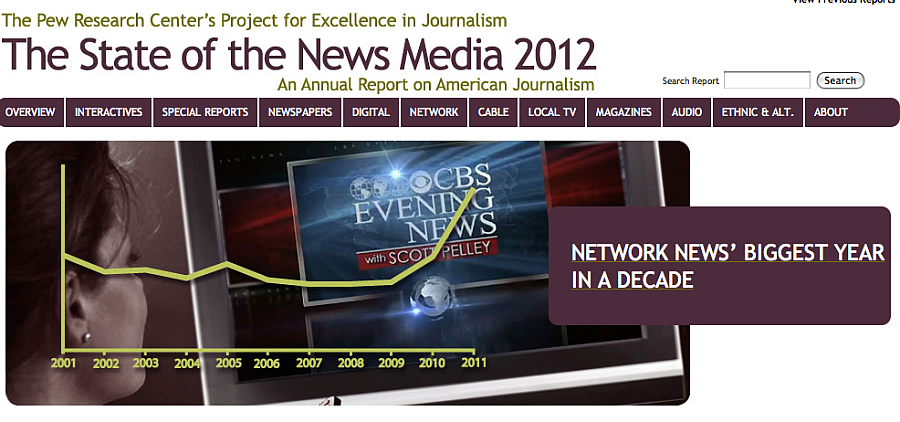The State of the News Media 2012: A Health Content Perspective

This year's State of the News Media report from the Pew Research Center's Project for Excellence in Journalism leads with mobile content. It's not surprising considering how prevalent mobile devices are.
But what is surprising is that this new publishing world of smartphones, tablets and laptops or desktops, is not just about the short stuff. The proliferation of mobile devices, it turns out, could actually be spurring long-form journalism:
Mobile may be leading to a deeper experience with news than on the desktop/laptop computer. As sales of e-readers and tablet computers grow, PEJ's early research has found consumers are reading more immersively on these devices than on earlier technology. New survey data released here add to that. More than a quarter of the population, 27%, now get news on mobile devices. And these mobile news consumers are even more likely to turn to news organizations directly, through apps and home pages, rather than search or recommendations - strengthening the bond with traditional brands. The evidence also suggests mobile is adding to, rather than replacing, people's news consumption.
This reflects a trend that was discussed at SXSW Interactive in Austin last week. The Pew report also points out that more consumers in America are using all more than one device:
A new survey of more than 3,000 U.S. adults by the Pew Research Center's Project for Excellence in Journalism finds that rather than gravitating toward one device, a growing number of Americans are becoming multiplatform digital news consumers. These "digital mavens" get news on all their devices - and even more so if they own all three types of devices. In other words, digital devices appear to be an additive experience.
Furthermore, a media brand's reputation still has more weight than social media links, especially on mobile devices. This is not to discount the "rapid growth" of traffic generated by Facebook and Twitter – anyone who owns a web property can tell you how important those networks are to driving readers to their content. But the report does assert that social media is not the end-all news driver that many people thought it would become was last year. The networks play an additive role, rather than act as a replacement for visiting news sites.
What does all this mean for health content in the media? The report's data shows that newspapers pay more attention to business, education and health than other news mediums, but newspapers are also suffering from the greatest revenue loss of all the sectors Pew reviewed.
Pew's annual report features an interactive chart-maker, where you can choose your own variables to compare media coverage of stories and topics in 2011, as I've done here. Health and health care, it turns out, are getting less coverage than in 2010 across all media. Here are some numbers on topics in the newshole from 2011 and 2010.
And here is data on specific stories:
Contrast this with the research of Susannah Fox at Pew Internet, and the picture of health information on the web changes. 59 percent of adults in the United States look for health information online; 15 percent look for health information using their mobile phone, she reports. These findings are more consistent with Michael Remez's State of the News Media section on community news, which points out that local, niche sites are faring well. Health News Florida is a strong example.
The data leaves me with more questions than answers. Do news media have an opportunity to provide more health information to an audience hungry for that kind of news? Or do these numbers suggest that specialized sites and social media are better venues for health information?
Related: Health Media Takeaways from the 2011 State of the Media Report
